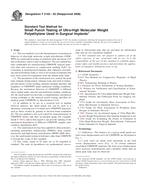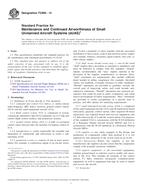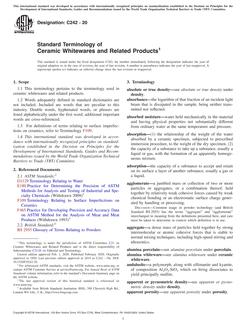1.1 This specification applies to those elastomeric cellular materials of a firm grade that are manufactured in preformed shapes for use as gaskets and for use as sealing materials, in the form of compression seals or gaskets, or both, for glazing other building joint applications.
Note 1 – For softer cellular elastomeric materials used in secondary sealing applications, refer to Specification D 1056.
1.2 Test Method C 1166, as referenced in this specification, should be used to measure and describe the properties of materials, products, or assemblies in response to heat and flame under controlled laboratory conditions and should not be used to describe or appraise the fire hazard or fire risk of materials, products, or assemblies under actual fire conditions. However, results of this test may be used as elements of a fire risk assessment which takes into account all of the factors which are pertinent to an assessment of the fire hazard of a particular end use
1.3 The committee with jurisdiction over this standard is not aware of any comparable standards published by other organizations.
1.4 This test method is intended to determine the ability of compounds made from rubber or rubber-like materials to resist the effect of low temperatures that may cause them to become brittle and fracture or crack when bent. Standard specimens are exposed to specified low temperatures for definite periods after which the specimens are bent in a prescribed manner and any fracture or cracking noted. The procedure is commonly called the “Thiokol” method. Note 1Results obtained by this test method are influenced by the rate of flexing of the cooled specimens which can not be closely controlled in the prescribed apparatus. They are therefore of a qualitative nature and may not be closely reproducible over a range of several degrees of temperature depending on the speed of flexure. For more accurate determination of brittle temperature, and particularly in new specifications, Test Method D 746 is recommended.
Product Details
- Published:
- 05/01/2006
- Number of Pages:
- 5
- File Size:
- 1 file , 110 KB
- Redline File Size:
- 2 files , 210 KB


